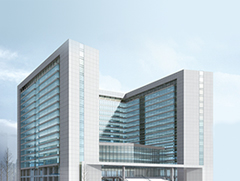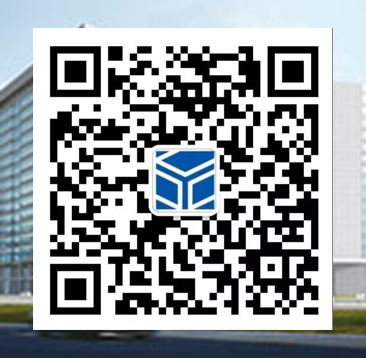
盐城,始名盐渎,建于汉武帝元狩四年(前119),东晋义熙七年(411)更名盐城,因城形似瓢,又名瓢城。自南宋绍兴乾道间(1131——1173),先后三次修筑城池,宋嘉定八年(1215)知县尤炳、元至正十五年(1355)知县秦曹经两次重修,皆为土城。明永乐十六年(1418)备倭指挥杨清、守御千户冯善重修城池,改土城为砖城,并扩大原有城池规模。城高二丈二尺,周长七里一百三十四步,东西长二里二百一十七步,南北长二里一百八十步,护城河深九尺。明清两代,城墙多次修缮。民国二十八年(1939),为应对日军空袭,便于疏散,城墙拆除。

织构绿色项链,传承城墙记忆
为提升城市环境品质,重塑城市风貌特色,市委市政府加快推进老城区微更新建设,于2020年起启动瓢城绿廊建设,利用一年时间,结合建军路商圈业态提升,因地制宜建设多样的林荫空间,通过历史与现代的演绎、生态与文化的互动留住瓢城记忆。
瓢城绿廊建设项目位于盐城中心城区老城核心区,主要实施线路为沿环城南路、环城西路、环城北路,迎宾北路、迎宾南路形成瓢形环状,总长度4.84公里,景观总面积148.5亩。绿廊沿线实施道路行道树种植和改造,种植胸径20厘米左右的法桐,在迎宾路八十间地块、环城北路北侧、环城西路西侧等处建设口袋公园、游园。


根据市委市政府决策部署,市城投集团加快对城市更新改造,启动瓢城绿廊建设,利用史料记载原城门位置,打造四个重要的城门记忆小品:安泰四方、拱斗星辰、朝阳永续、迎薰远眺。同时恢复盐城古八景之一“瓜井仙踪”,复建古城墙与上述文化铺装系统一起,形成一条重要的古城寻踪文化脉络。




1. 安泰门·安泰四方
安泰门,古瓢城城池西门。佛教以为,日出东方而始,日落西方而至,西方被称为西方净土、安养净土、安养世界、安乐国,因此古代西门常称为“安”。后来也有人附会为安定西部边陲之意。明永乐十六年(1418)修,有城楼。
Antai Gate was the west gate of ancient Yancheng. It is believed by Buddhists that everything begins as the sun rises in the east and arrives as the sun sets in the west. In Buddhism, the west has always been called the Pure Land of peace and happiness, thereby the west gate was often named as “An” in ancient times which means peace in Chinese. Antai Gate was initially built in 1418 with a tower.


安泰门设计稿

安泰门实景图
2. 拱斗门·拱斗星辰
拱斗门,古瓢城城池北门。拱斗,也称为拱极,或者拱辰。意思是拱卫北极星或者北斗星,源自《论语·为政》:“为政以德,譬如北辰,居其所,而众星共(拱)之。”因北斗星在北方,因此古代常用来作为北门的称谓。明永乐十六年(1418)修,有城楼。
Gongdou Gate was the north gate of ancient Yancheng. “Gongdou” means surrounding and guarding the north polar star in Chinese, sourced from the Analects of Confucius: "He who exercises his government by means of his virtue may be compared to the north polar star, which keeps its place and all the stars turn towards it." The north polar star being in the north, Gongdou Gate was often used as the name of the north gate in ancient times. It was initially built in 1418 with a tower.


拱斗门设计稿

拱斗门实景图
3. 朝阳门·朝阳永续
朝阳门,古瓢城城池东门。因东面最先迎接太阳,因此东门多称为“朝阳”。明永乐十六年(1418)修,有城楼。
Chaoyang Gate was the east gate of ancient Yancheng. The sun rising in the east every day, it is understandable for the east gate to receive its name “Chaoyang” with the Chinese meaning of greeting the sun. It was initially built in 1418 with a tower.


朝阳门设计稿

朝阳门实景图
4. 迎薰门·迎薰远眺
迎薰门,古瓢城城池南门。意指迎纳、沐浴着来自南方的和煦之风。取自《礼记·乐记》:“昔者舜弹五絃之琴,造《南风》之诗,其诗曰:南风之薰兮,可以解吾民之愠兮。南风之时兮,可以阜吾民之财兮。”明永乐十六年建砖城时,原无南门,明万历七年(1579年)知县杨瑞云为便民进出,在文庙外增建南门,门上有楼三楹,上题“淮阳一览”,门外建有跃龙池、迎恩亭。后因城内多火灾,南门再次被封闭。崇祯十三年(1639)知县张桓西移数十米复修南门。
Yingxun Gate was the south gate of ancient Yancheng with the meaning of receiving and being bathed in the warm breeze from the south, sourced from Book of Rites: “Warm breeze from the south would release people from all their troubles and enrich them with fortune.” There was no south gate in 1418 when the city wall was rebuilt with bricks until 1579 that the south gate was added outside the Confucian Temple for the purpose of convenient coming in and out of people. Three buildings were built on the top of the gate inscribed with “having an overall view of Huaiyang” and Flying-dragon Pond and Bliss-receiving Pavilion were set up outside the gate. The south gate was closed later because of frequent fires. In 1639, a new south gate was rebuilt dozens of meters westwards from the original site.


迎薰门设计稿

迎薰门实景图
瓢城绿廊作为承载盐城历史文化的重要载体,在项目建设中,城投集团注重历史传承与人文景观挖掘,做好景、砖、校、城文章,加强对城市风貌整体性方面的规划管控,更好展示盐城历史文化,切实提升老城功能与人居品质。



